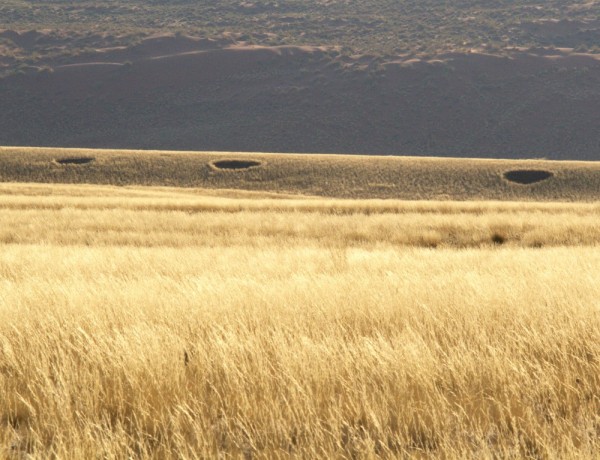By Ana Verayo, | January 19, 2017

Fairy circles at the Namib desert in Namibia are probably produced by termites and desert vegetation competition. (Vernon Swanepoel/CC BY 2.0)
African mythology says that the mysterious marks on the surface of the Namib desert are the footprints of the gods. However, scientists have examined this pockmarked land closely and are suggesting a different explanation for how these "fairy circles" are produced.
Like Us on Facebook
These repetitive round patterns appear to be bare discs of soil that researchers say could be produced by termites or desert gas activity underneath. These patterns can measure up to 25 meters wide.
In this new study, a team from Princeton University utilized computer models and produced simulations to mimic the desert ground and termite colonies underground. Sand termites living under the Namib desert can eat the roots of low-lying vegetation.
The results of the simulations revealed that these "dead zones" are confined to patches that are created due to neighboring colonies which are similar in size, building borders between their territories.
According to ecologist Corina Tarnita of Princeton, termites can start their mound and then forage. When they find a smaller colony, they kill that colony to expand their territory. However, if they meet formidable colony or a bigger one, they end up with a boundary where there is permanent conflict but no invasion.
But termites alone cannot explain these patterns. Another computer model was simulated with desert plants when they take root and provide moisture and shade. If a plant grows, their roots also spread out and suck in more water which makes it harder for distant plants to find water.
The team applied these two theories in a new simulation, and fairy circles appeared with digital termite activity. With simulated desert plants, small patches of vegetation appeared between these fairy circles.
Tarnita explained that there is a smaller scale pattern that is driven by desert plants through their self-organization in response to water. The team also went to Namibia and photographed the landscape of the Namib desert. They discovered strikingly similar patterns to their computer simulation.
This new study was published in the journal, Nature.
-
Use of Coronavirus Pandemic Drones Raises Privacy Concerns: Drones Spread Fear, Local Officials Say

-
Coronavirus Hampers The Delivery Of Lockheed Martin F-35 Stealth Fighters For 2020

-
Instagram Speeds Up Plans to Add Account Memorialization Feature Due to COVID-19 Deaths

-
NASA: Perseverance Plans to Bring 'Mars Rock' to Earth in 2031

-
600 Dead And 3,000 In The Hospital as Iranians Believed Drinking High-Concentrations of Alcohol Can Cure The Coronavirus

-
600 Dead And 3,000 In The Hospital as Iranians Believed Drinking High-Concentrations of Alcohol Can Cure The Coronavirus

-
COVID-19: Doctors, Nurses Use Virtual Reality to Learn New Skills in Treating Coronavirus Patients







